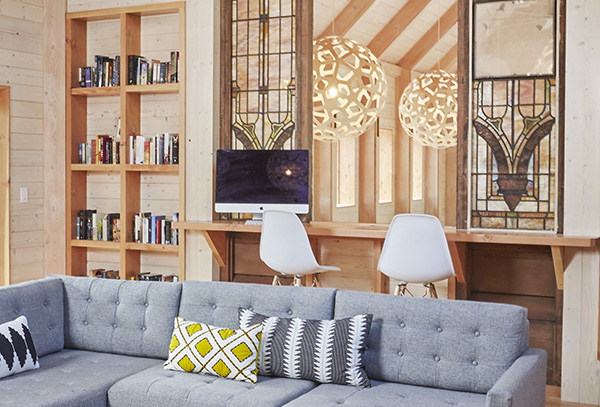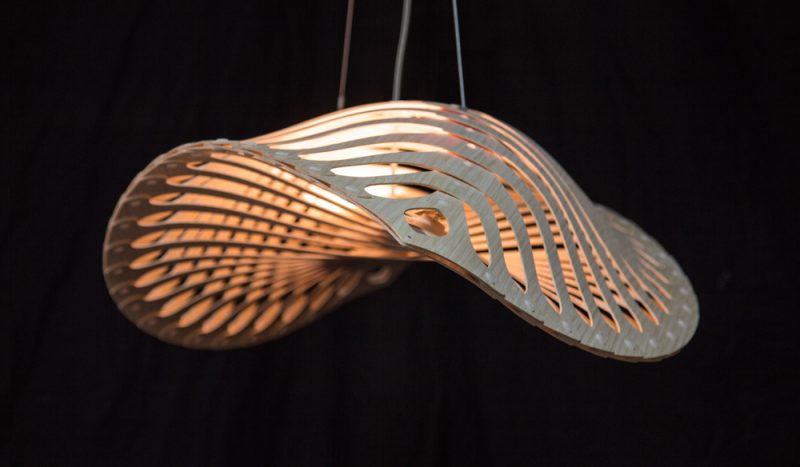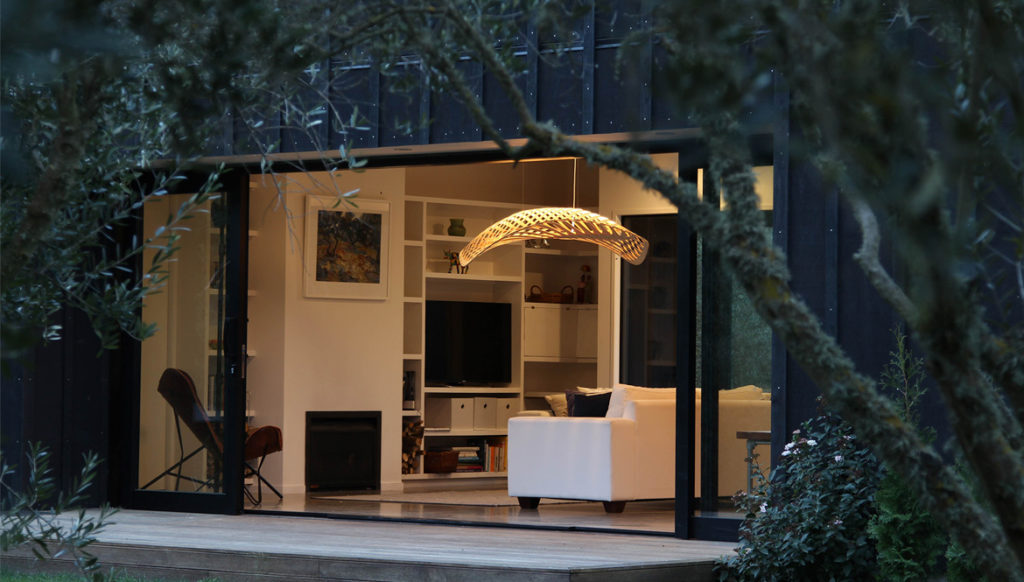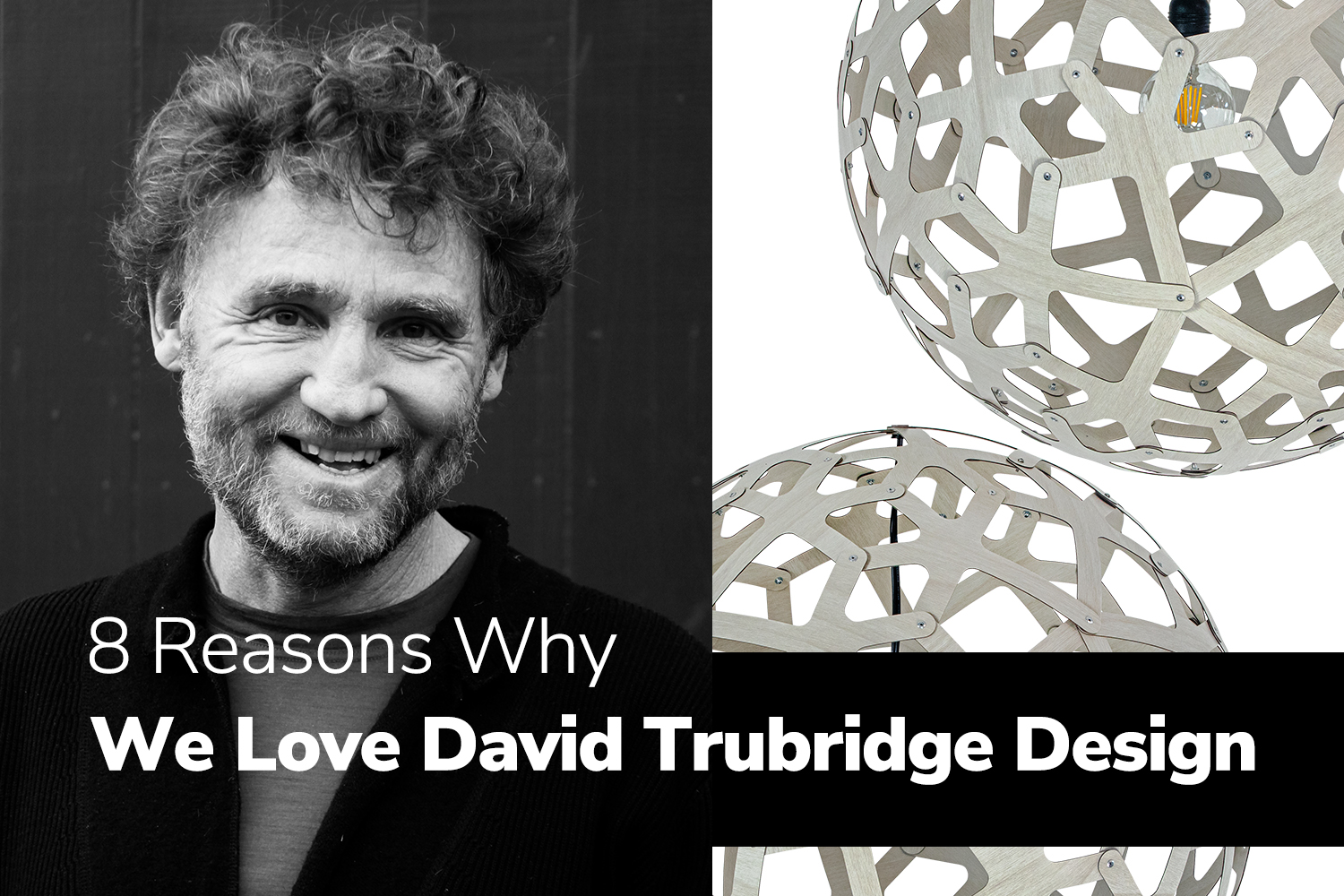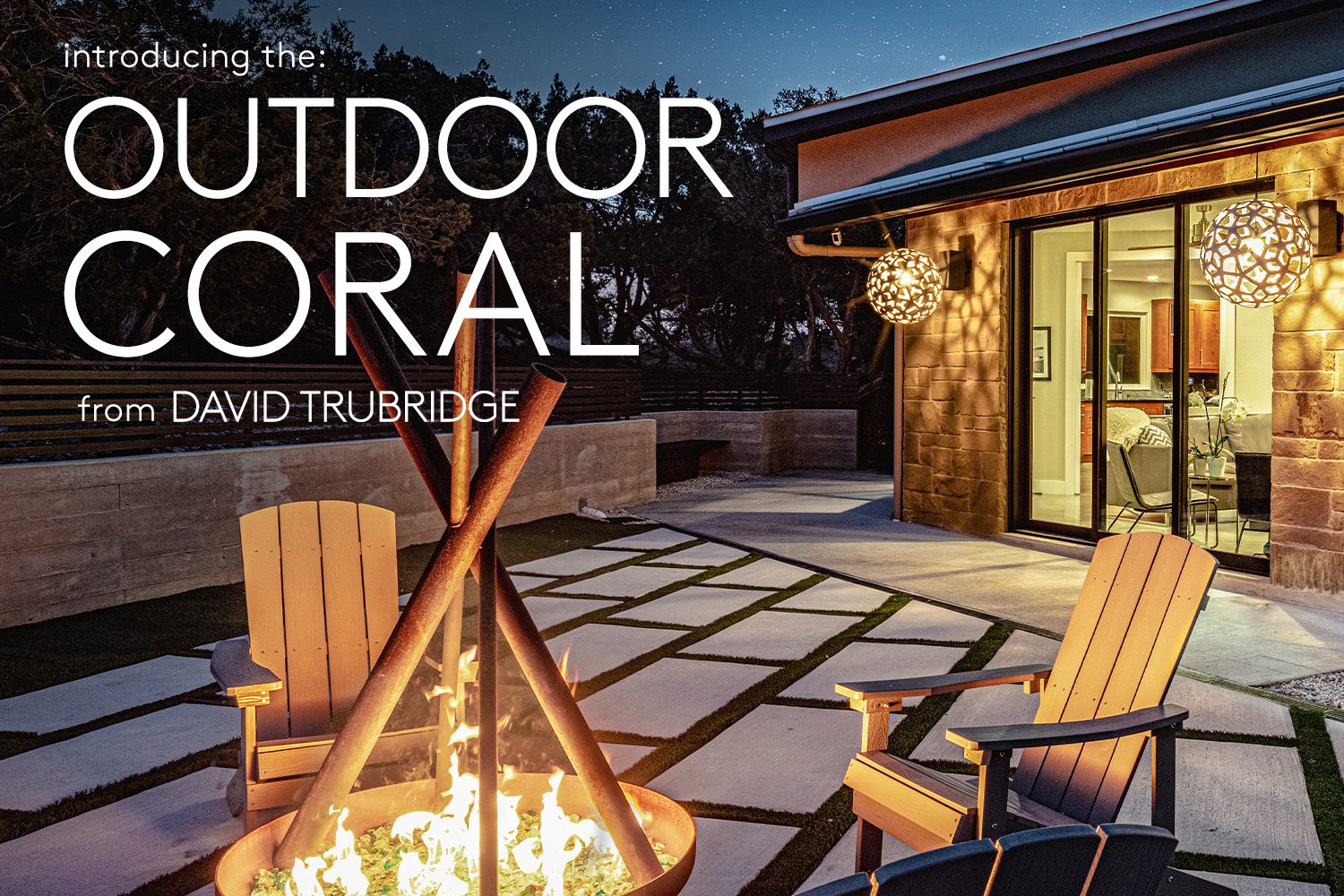David Trubridge Design has carved a niche in the world of contemporary lighting and furniture…
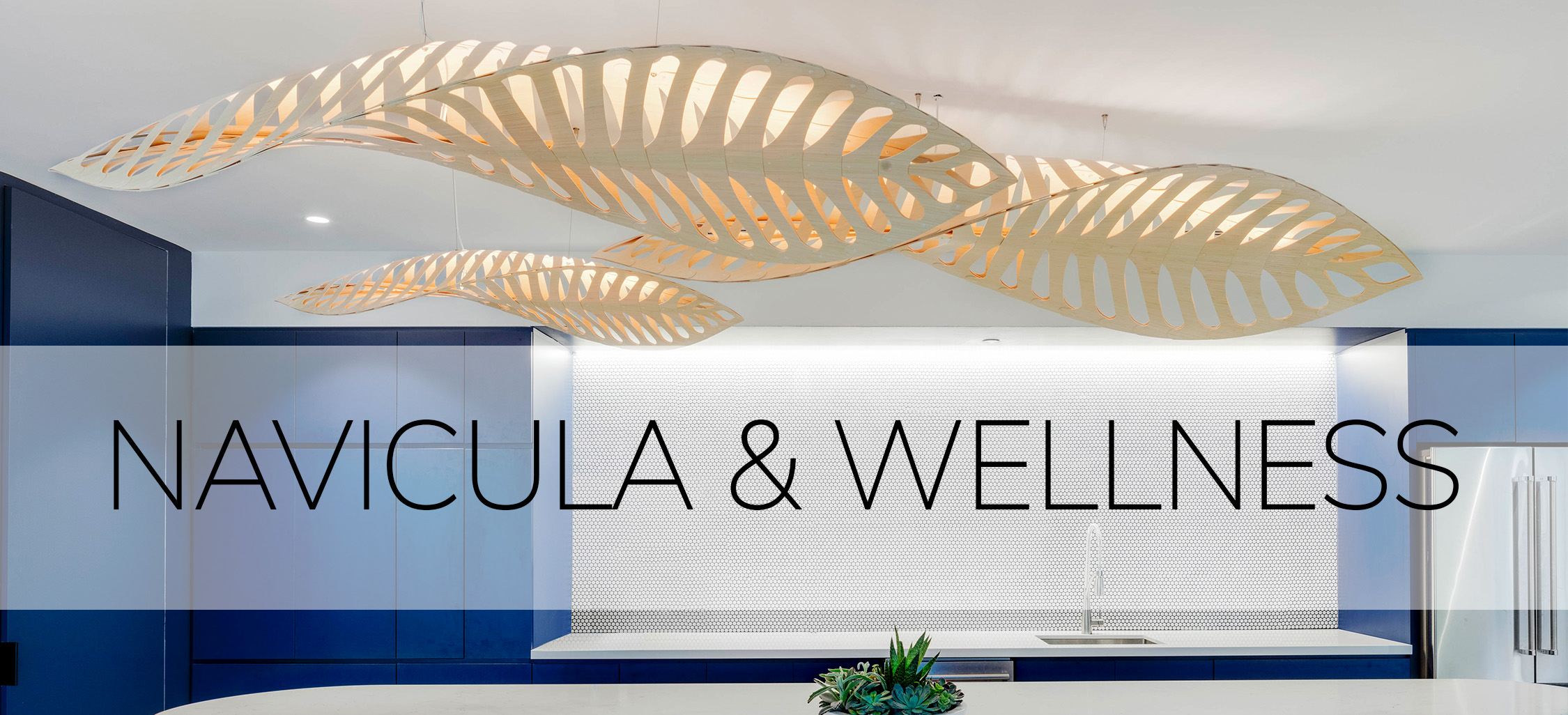
Biophilic design for stress reduction & productivity increase: The soothing power of natural forms, shapes and materials.
Humankind has an inherent connection to nature. We came from nature, and the desire to seek it out remains in our DNA. Sometimes it is overt – a walk in the park, a photographic landscape screensaver, a beach vacation. Other times, the attraction is subliminal – the way we respond to colors, patterns, shapes and abstractions inspired by the natural world. We are nature, and even when we spend 90% of our days indoors, we still seek to connect with it.
Over the last few decades, the design and construction industry, along with business and facility owners across vertical segments have begun to take a closer look at how the built environment can help facilitate rather than obstruct the human need for nature. One of its best efforts to date is the WELL Building Standard®. WELL is concerned with the built environment’s impact on the health and wellbeing of its occupants, with the goal of improving everything from nutrition and fitness to mood and sleep patterns.
The system is based on eleven concepts: Air, Water, Nourishment, Light, Movement, Thermal Comfort, Sound, Materials, Mind, Community and Innovation. As surprising as it may sound, every design decision has the opportunity to contribute to a WELL building – even the choice of decorative lighting fixtures.

David Trubridge decorative lighting fixtures support multiple WELL Building concepts.
Decorative lights can increase the connection to nature within a space. As an artist with a deep and passionate commitment to the environment, David Trubridge creates lighting with that specific purpose in mind. He designs, he explains “…to recreate that vital connection to nature that we have lost so much, living in insulated cities.”
In fact, Trubridge’s work so embodies the spirit of WELL Building that the co-author of the WELL Building Standard, Jason McLennan, has multiple David Trubridge fixtures throughout his home – which also happens to be one of the world’s first Living Building Challenge projects.
The most obvious WELL Building concept to consider in relation to lighting fixtures is Light. The International Association of Lighting Designers (IALD), one of the industry’s most influential organizations, recently reinforced the WELL Building Standard by publishing guidelines to help both designers and manufacturers meet WELL Building criteria.
But decorative lighting fixtures – particularly those from David Trubridge – have a role to play in other concepts.
Movement is about promoting physical activity and discouraging sedentary behaviors. Placing one of David Trubridge’s fixtures in a space that lights and attracts attention to the stairs and encourages their use rather than the elevator would support the Movement concept.
Materials aims to reduce exposure to toxic compounds and hazardous building material ingredients. David Trubridge Designs has always embraced material transparency with fixtures made from rapidly renewable bamboo finished with water-based paints that are free of VOCs.
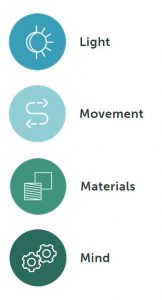
Biophilic design reduces stress, boost productivity and improves overall mental health.
Navicula, large scale LED pendant light by David Trubridge Design, is an example of a lighting fixture that qualifies for the Wellness Standard and has biophilic design.
Like living walls and panoramic views, the David Trubridge Navicula pendant is another way for designers to connect occupants to nature by bringing natural elements inside – also known as biophilic design. Mental and emotional health is a fundamental component of wellness, which is the focus of both the WELL Building Standard’s Mind concept and a key benefit of biophilic design. How well designers make use of the human brain’s attraction to nature directly impacts stress levels, productivity, learning, and health.
- Offices with natural design elements can increase employee productivity by 8% and well-being by 13 percent. (Human Spaces Report, 2018).
- In healthcare facilities, the inclusion of natural views and natural analogs have been shown to reduce recovery times and lower the use of pain medication among surgical patients (The Economics of Biophilia, 2012).
- Current research shows that even classrooms can be strategically designed with biophilic design elements to foster better test scores, optimal health, and increased learning rates (The Economics of Biophilia, 2012).
Three ways Navicula brings nature indoors
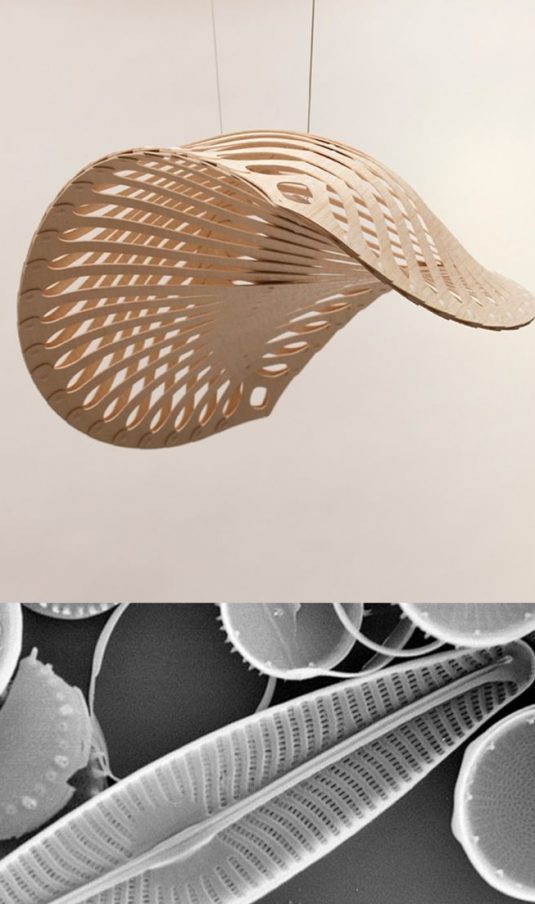
Inspiration for the Navicula fixture by David Trubridge came from the shapes of microscopic diatoms in our oceans.
There are countless ways designers can help building occupants make a connection with nature. The oceanic-inspired Navicula pendant light fulfills the brain’s desire for nature’s soothing influence through:
- Organic Shapes – Navicula’s shape was inspired by diatoms – microscopic organisms responsible for oxygenating the earth’s oceans. Early in the design phase, Navicula was rendered as a symmetrical leaf-like structure. But during the prototyping stage, nature itself became a collaborator in the design process: the fixture twisted under the tension of the bamboo grain, resulting in a much more organic, three-dimensional form.
- Natural Wood Grain – Navicula is made from bamboo, and when left unpainted, the natural grain is clearly visible. The LED light source is encased within the bamboo structure, disappearing into the fixture so it doesn’t visually interrupt the natural flow or material.
- Soothing Patterns of Light and Shadow – In nature, the shifting interactions of light and shadow soothe the human mind. When decorative light mimics nature, it positively influences mental well-being. A University of Oregon study that measured the brain’s electrical response to recreating this fractal pattern effect showed that “this aesthetic experience is accompanied by stress reduction of 60 percent – a surprisingly large effect for a non-medicinal treatment.” (Smithsonian Magazine, March 2017) David Trubridge embraces natural fractal patterns in the design of all his decorative lighting. When multiple Navicula pendants of varying sizes are grouped together, the fractal light patterns are mesmerizing and calming.

